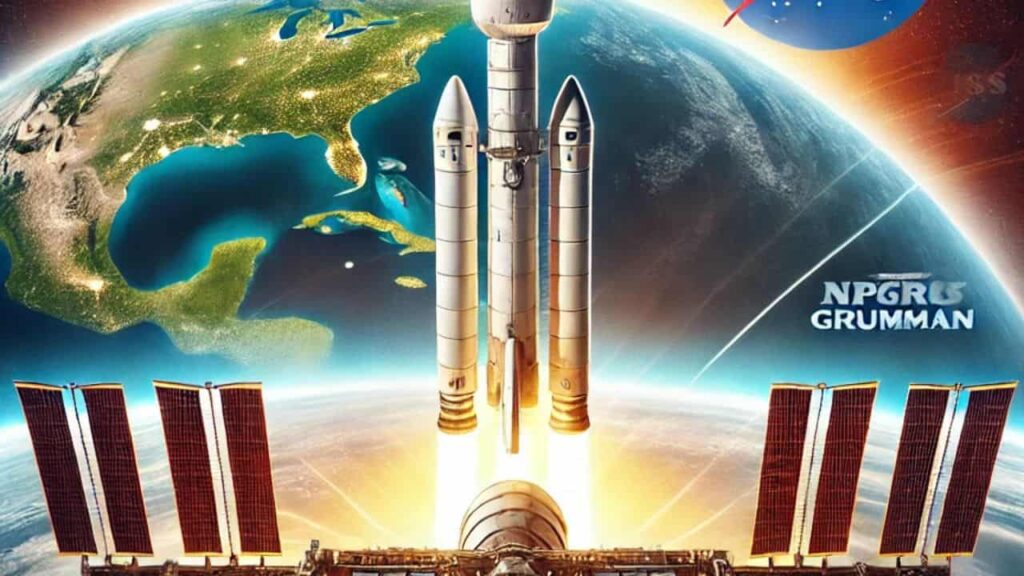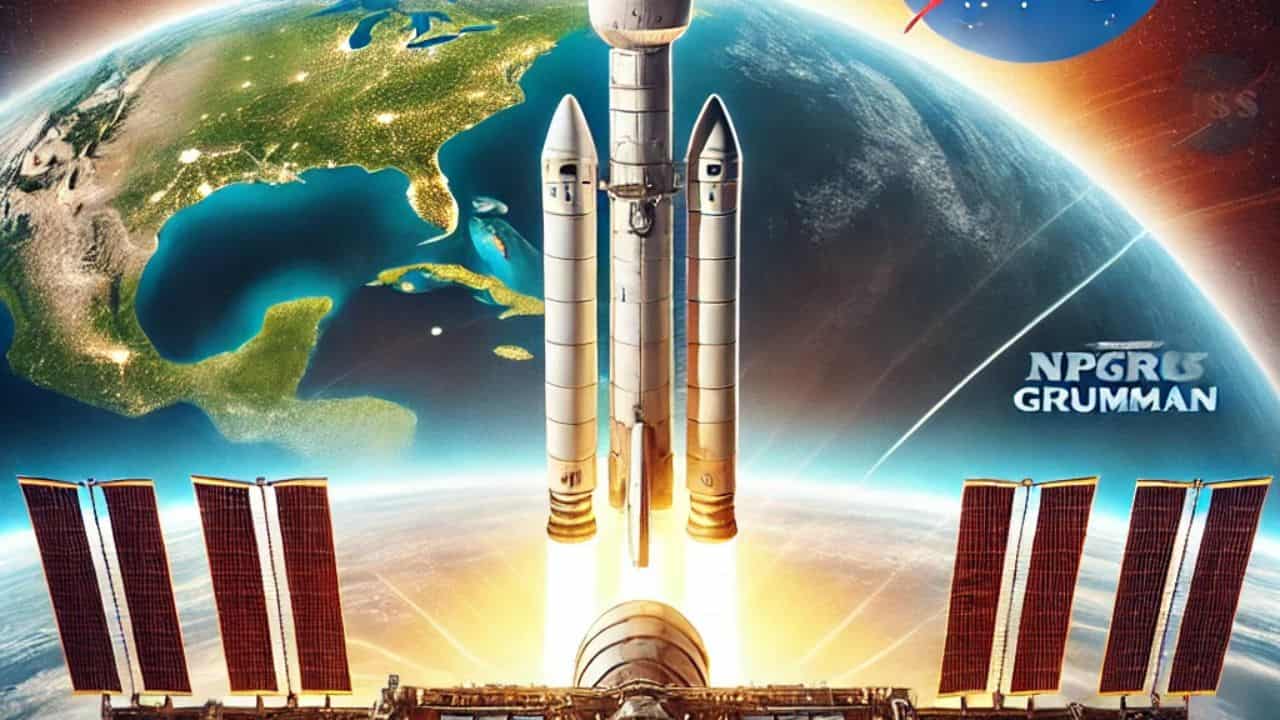NASA, Northrop Grumman, ISS resupply mission, space launch, SpaceX Falcon 9, Cygnus spacecraft, International Space Station, STEMonstration, space research, DNA repair mechanisms, stem cell production, CubeSats, space exploration
Explore the details of NASA and Northrop Grumman’s 21st resupply mission to the International Space Station (ISS). Discover the scientific experiments and research onboard, including DNA repair mechanisms, stem cell production, and educational CubeSats. Learn about the launch schedule, media coverage, and public engagement opportunities.

NASA Sets Coverage for Northrop Grumman’s 21st Station Resupply Launch
NASA, in collaboration with Northrop Grumman and SpaceX, is gearing up for the 21st commercial resupply mission to the International Space Station (ISS). This mission, set for 11:28 a.m. EDT on Saturday, Aug. 3, will deliver crucial science investigations, supplies, and equipment to the ISS, marking another milestone in the ongoing partnership between these space industry giants.
Launch Details and Coverage
The Northrop Grumman Cygnus spacecraft, carrying nearly 8,200 pounds of supplies, will be launched aboard the SpaceX Falcon 9 rocket from Space Launch Complex 40 at Cape Canaveral Space Force Station in Florida. NASA will provide live coverage of the launch starting at 11:10 a.m. on NASA Television, the NASA app, YouTube, and the agency’s website. This comprehensive coverage ensures that space enthusiasts and professionals worldwide can witness this significant event.
Arrival and Capture
The Cygnus spacecraft is scheduled to arrive at the ISS on Monday, Aug. 5. NASA’s coverage of the arrival will begin at 2:30 a.m. on various platforms, including NASA Television and the NASA app. NASA astronaut Matthew Dominick will be responsible for capturing Cygnus using the station’s robotic arm, with NASA astronaut Jeanette Epps acting as his backup. Following the capture, the spacecraft will be installed on the Unity module’s Earth-facing port.
Science and Research on Board
This mission is not just about resupplying the ISS; it also brings along several critical scientific investigations and research projects. Some of the highlights include:
- Liquid and Gas Flow Evaluation: Test articles to evaluate liquid and gas flow through porous media, essential for space station life support systems.
- STEMonstration: A balloon, penny, and hexnut for a new STEMonstration on centripetal force, aiming to inspire the next generation of scientists and engineers.
- DNA Repair Mechanisms: Microorganisms known as Rotifers will be used to examine the effects of spaceflight on DNA repair mechanisms, contributing to our understanding of biological processes in microgravity.
- Stem Cell Production: A bioreactor designed to demonstrate the production of high-quality blood and immune stem cells, which could have significant implications for medical research.
- Vascularized Liver Tissue: Vascularized liver tissue will be analyzed to understand the development of blood vessels in engineered tissue flown to the space station.
Additionally, NASA’s CubeSat Launch Initiative is sending two CubeSats for deployment from the ISS. These are CySat-1 from Iowa State University and DORA (Deployable Optical Receiver Aperture) from Arizona State University, part of the Educational Launch of Nanosatellites (ELaNa 52).
Media and Public Engagement
Media personnel interested in speaking with a science subject matter expert can contact Sandra Jones at sandra.p.jones@nasa.gov. The Cygnus spacecraft, named S.S. Richard “Dick” Scobee after the former NASA astronaut, will remain at the ISS until January. Upon departure, it will burn up in the Earth’s atmosphere, concluding its mission.
NASA’s mission coverage schedule is as follows:
Friday, Aug. 2:
- 3 p.m. – Prelaunch media teleconference with key NASA and Northrop Grumman representatives. Media must request dial-in information by 1 p.m. Aug. 2.
Saturday, Aug. 3:
- 11:10 a.m. – Launch coverage begins on multiple platforms.
- 11:28 a.m. – Scheduled launch time.
For more information, the public can visit NASA’s website, which provides extensive coverage including live streaming, blog updates, and post-launch photos. Members of the public can also register to attend the launch virtually, gaining access to curated launch resources and a virtual guest passport stamp.
Significance of the Mission
The 21st Northrop Grumman resupply mission underscores the importance of international collaboration and private-public partnerships in space exploration. These missions are crucial for maintaining the ISS’s operations and supporting the scientific research conducted aboard the station. The Cygnus spacecraft’s cargo will enable astronauts to continue their work on experiments that could lead to breakthroughs in various fields, from biotechnology to materials science.
Technological and Scientific Advancements
This mission illustrates the advancements in space technology and the expanding capabilities of private companies like Northrop Grumman and SpaceX. The Cygnus spacecraft, with its ability to carry a diverse array of scientific instruments and supplies, showcases the progress in spacecraft design and the growing importance of commercial entities in space missions.
The inclusion of educational payloads like CubeSats also highlights NASA’s commitment to fostering STEM education. By involving universities and students in real-world space missions, NASA is helping to cultivate the next generation of space scientists and engineers.
Looking Ahead
As NASA continues to work towards its Artemis program and the goal of returning humans to the Moon and eventually Mars, these resupply missions play a vital role in testing and refining the technologies and processes needed for long-duration space travel. The experiments and research conducted on the ISS provide critical data that will inform future missions beyond low Earth orbit.
In conclusion, the 21st Northrop Grumman resupply mission represents a significant step forward in space exploration and scientific research. The mission’s success will not only ensure the continued operation of the ISS but also contribute to the broader goals of human spaceflight and exploration. Through these efforts, NASA and its partners are paving the way for a future where space travel becomes a routine part of human activity, unlocking new possibilities for discovery and innovation.
Read More
- How Climate Change is Shifting Earths Rotation: Insights from NASA Studies
- NASA Ends VIPER Project: A New Direction for Moon Exploration
- NASA and JAXA Achieve Milestone with Successful Laser Communication Between Moon and Orbiter
- NASAs Perseverance Rover Discovers Potential Signs of Ancient Life in Mars Rock










